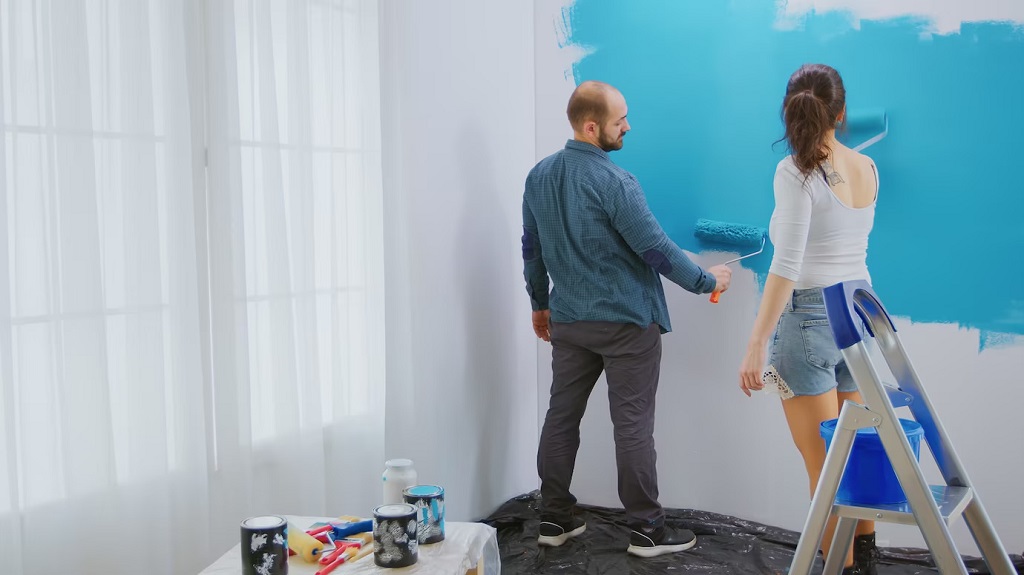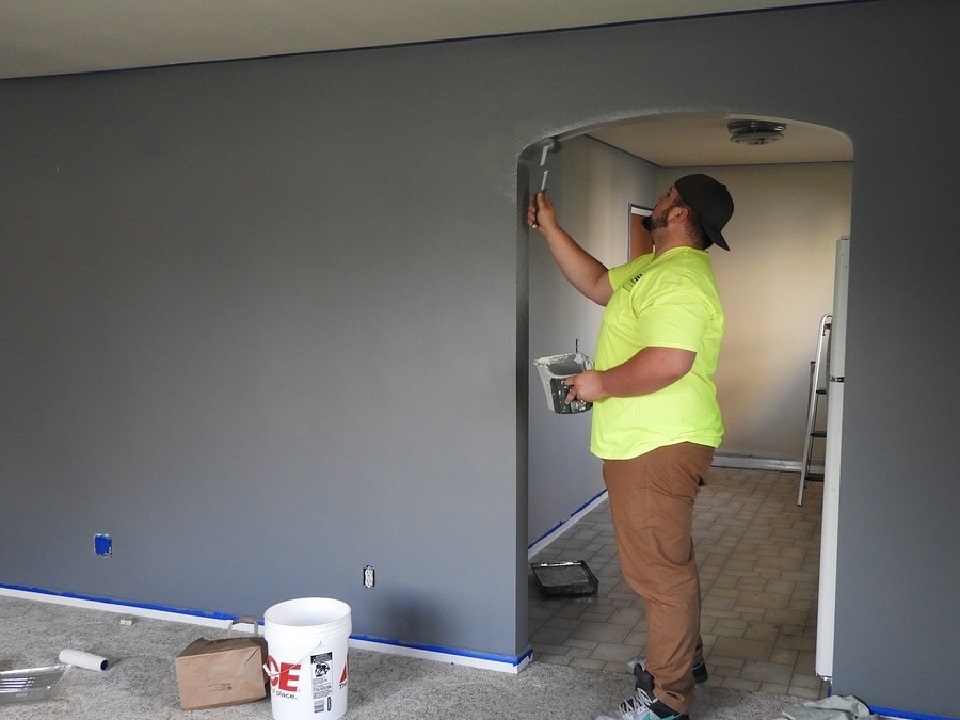
03 Aug Painting a Room for Beginners: A Step-by-Step Guide
Are you a beginner looking to paint a room in your home? Painting can be a fun and rewarding DIY project that allows you to transform the look and feel of a space. Whether you’re looking to freshen up a room with a new coat of paint or add a pop of color to your walls, this article will guide you through the process of painting a room for beginners.
Choosing the Right Paint
Before you start painting, it’s important to choose the right paint for your project. Consider the following factors:
Determine the Room’s Purpose
When deciding on the color scheme for your room, consider the purpose of the space and the type of atmosphere you want to achieve. If you’re painting a bedroom, soothing colors that promote relaxation, such as soft blues or greens, maybe a good choice. For a more sophisticated look, consider using cherry wood paint on the furniture or accent pieces in the room.
Selecting the Paint Finish
Different paint finishes have varying levels of shine and durability. Common paint finishes include matte, satin, semi-gloss, and high-gloss. Matte finishes are ideal for concealing imperfections, while high-gloss finishes are easy to clean and are more durable.
Color Selection
Consider the existing décor and furniture in the room when selecting a paint color. Get paint samples and test them on the wall to see how they look in different lighting conditions.
Preparing the Room
Proper preparation is key to achieving a professional-looking paint job. Follow these steps to prepare the room:
Clear the Room
Remove furniture, decorations, and fixtures from the room. Cover the floor and any remaining items with drop cloths to protect them from paint splatters.
Clean the Surfaces
Clean the walls and surfaces you plan to paint to remove dirt, dust, and grease. Use mild soap and water to wash the walls and allow them to dry completely.
Patch and Repair
Inspect the walls for any holes, cracks, or imperfections. Fill these with spackling compound and sand them smooth once dry.
Tape and Protect
Apply painter’s tape to edges, corners, and trim to ensure clean lines and prevent paint bleed. Use plastic sheets to cover larger areas like windows and doors.
Painting Techniques
Now that you’ve prepared the room, it’s time to start painting. Follow these steps for a successful paint job:
Start with a Primer
Applying a coat of primer helps the paint adhere better and provides a smooth surface for the topcoat. Use a roller or brush to apply the primer evenly and allow it to dry completely.
Cutting-In
Using a brush, “cut-in” by painting along the edges, corners, and trim of the room. This creates a border for the larger areas that will be painted with a roller.
Rolling the Walls
Use a roller to paint the larger areas of the walls. Start from the top and work your way down, applying even pressure and overlapping each stroke slightly. Allow the first coat to dry completely before applying a second coat if needed.
Painting the Ceiling
If you’re also painting the ceiling, start by cutting-in along the edges with a brush. Then, use a roller to paint the rest of the ceiling in smooth, even strokes.
Finishing Touches
Once the walls and ceiling are dry, remove the painter’s tape carefully. Inspect the painted surfaces for any touch-ups needed and make corrections as necessary.
Conclusion
Painting a room as a beginner doesn’t have to be intimidating. By following these step-by-step guidelines, you can achieve a professional-looking paint job and transform the atmosphere of your space. Remember to choose the right paint, prepare the room properly, and employ the right techniques. Signs of a roof leak you shouldn’t ignore. With a little patience and attention to detail, you’ll be able to enjoy the satisfaction of a beautifully painted room.
FAQs
Q1: How much paint do I need for a room?
The amount of paint you’ll need depends on the size of the room and the number of coats you plan to apply. As a general guideline, one gallon of paint typically covers around 350-400 square feet.
Q2: Can I paint over wallpaper?
While it’s possible to paint over wallpaper, it’s generally recommended to remove the wallpaper first for better results. Painting over wallpaper may lead to peeling or bubbling in the future.
Q3: How long should I wait between coats of paint?
The drying time between coats of paint varies depending on the paint brand and type. Typically, waiting for 2-4 hours between coats is sufficient, but refer to the paint can for specific instructions.
Q4: Should I use a brush or a roller?
Both brushes and rollers have their uses in painting. Brushes are ideal for cutting-in and painting edges, corners, and trim, while rollers are efficient for covering larger wall areas.
Q5: Can I paint over a dark-colored wall with a lighter color?
Yes, it’s possible to paint over a dark-colored wall with a lighter color. However, it may require multiple coats of paint to achieve the desired color and coverage.


Sorry, the comment form is closed at this time.